Media | Articles
2023 Aston Martin Valkyrie First Drive: Hypercar apex predator
The year is 2063, and people are beaming up their daily edition of Hagerty news over breakfast. The first headline reads Valkyrie Found With Delivery Miles. For reasons that we’ll get to in a bit, that scenario would be lamentable, but it’s also entirely plausible, because in 2023, the Aston Martin Valkyrie is surely a blue-chip investment opportunity. One of those cars to be set aside, in a climate-controlled chamber, until the time is right for a return to market.
This outlook, I think, will only increase as more people realize just what a bargain the owners of the first 235 Valkyrie road cars (150 Coupés, 85 Spiders) have received. Because the more you learn about the development of this two-seat, carbon-fiber hypercar, the more you appreciate how, if Aston were to set the car’s sale price now—rather than back in 2016, as it did—the company would surely charge considerably more than £2 million.
The level of engineering here—a road-legal hypercar infused with the latest thinking from motor racing—is, like the challenges presented by those opposing forces, extraordinary. These factors are partly why it takes more than 2000 man-hours to build each car.
The man behind the Valkyrie is Adrian Newey, the Red Bull F1 team’s design genius. He envisaged a machine with amazing aerodynamic capabilities, one that consequently required packaging tighter than a shrink-wrapped miser’s wallet. This had ramifications throughout the car’s gestation.
There are the obvious things, like the small but ferocious naturally aspirated V-12, which is solidly mounted, no isolation for vibration or noise, to the Aston’s tub. It produces 1001 hp and revs to 11,100 rpm yet also conforms to Euro 6 emissions regulations. (Well done, Cosworth.) But Ricardo clearly deserves huge praise, too. Newey wouldn’t accept a dual-clutch transmission (too big, he said, and too heavy), instead insisting on a sequential ‘box with dog rings, an arrangement common in racing cars. The approach adds immediacy but does away with user-friendly synchromesh, the better to cope with the engine’s load. Making a transmission like this work in a road car required the innovative use of an electric motor (with a battery from Croatian hypercar manufacturer Rimac) to help smooth out the brutal shifts and prolong the life of the helically cut geartrain. That electric motor is also used for reversing and driving at low speeds where juggling the car’s light-switch clutch would be horrible.
Marketplace
Buy and sell classics with confidence
Then there’s the torsion-bar suspension—a fully active system designed by Red Bull, with a hydraulic pump borrowed from an Apache helicopter. It too is a first for a road car, although Newey did work with an active suspension on Williams F1 cars back in the 1990s. There is an active aero element as well, but it’s largely concerned with bleeding off downforce, not generating it.
Each of these features are mind-boggling on their own, especially when you think about the intricacies of getting each system to talk to the others and work with them as a harmonious entity. The Valkyrie’s active systems contain 15,817 tunable parameters, according to James Manners, head of the model’s vehicle engineering at Aston Martin.

Why Aston made this monster road-legal
To me, though, that’s not even the wildest part. The really phenomenal thing is the fact that this car has been homologated for road use. Crash-tested and all. We have perhaps gotten used to seeing supposedly track-only cars like Aston Martin’s own Vulcan or the McLaren F1 GTR modified, after manufacture, to be legal on public highways. Aston could have made its life easier by producing far fewer Valkyries (24 examples were mooted originally) and going about things that way. The economics of the project, however, demanded a bigger production run, and to match that with the all-important customer demand, the company believed the car had to wear license plates.
This path resulted in items like the Valkyrie’s amazing windscreen wiper, another torsion bar. That wiper took a year to develop and is made by the company that supplied such things to the Space Shuttle. It had to be tested in a wind tunnel designed for trains, because nothing else could throw rain at the windscreen fast enough.
I also like the story about the high-level brake light. (Not a sentence I often get to write.) The light is absolutely tiny and was originally planned to be even smaller. However, it had to be enlarged just enough so that an official Kitemark logo would fit, signifying that the arm adheres to British Standards Institute regulations for road vehicles.
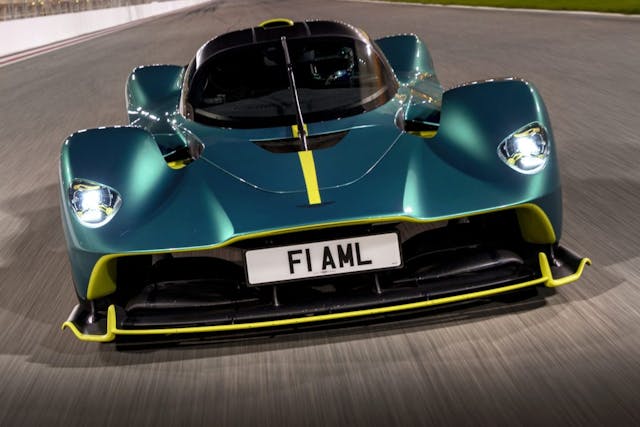
There are myriad weight-saving stories here, tales of tortuous redesigns and anecdotes about arguments and solutions created. Even before you get to the driving, it all adds up to a car with a fascinating mythology and status. But the Valkyrie is a car that really should be driven.
A few weeks before the Formula 1 circus arrived in Bahrain for its first race of the year, I climbed behind the wheel of a Valkyrie and drove down the floodlit pit lane of the country’s Sakhir circuit, heels higher than my hips, just as they would be in an F1 car.
Specs: 2023 Aston Martin Valkyrie
- Price as tested: £2 million (~ $2.4 million)
- Powertrain: 6.5-liter, naturally aspirated V-12 w/electric assist motor,
Seven-speed sequential, rear-wheel drive, e-reverse - Output: 1139 hp @ 10,600 rpm (combined)
- Engine Torque: 575 lb-ft @ 7000 rpm
- Electric Motor Torque: 207 lb-ft from 500 rpm
- Layout: Two-seat, rear-wheel-drive hypercar
- Weight: 2800 pounds dry*
- Fuel economy: 32.1 mpg*
- 0–60 mph: Less than 3.0 seconds*
- Top speed: More than 200 mph*
*Figures provided by Aston Martin; wet (full fuel tank plus all drivetrain fluids) weight not supplied
The steering wheel might be slightly simpler than Alonso’s, but it carries the same vibe. Visibility is far better than you might expect from sitting in the Valkyrie while stationary, and boy, is it a visceral experience, with all those vibrations coming through the carbon tub. The first gearshift is a wake up call, too, with a physicality that sets your head nodding. All this before the last pit garage has passed.
As intimidating as the Aston’s fundamental ergonomics can be, the controls are pleasingly approachable. The pedals have a lovely progression that allows you to really meter out acceleration and braking with confidence. The brake pedal in particular has wonderful feel, with plenty of well-supported travel to lean into. Steering feel is always tricky to judge on glass-smooth circuits, but what’s instantly obvious is the linear, easy way in which you can control the Aston’s nose. It feels calmer than I’d feared it might.
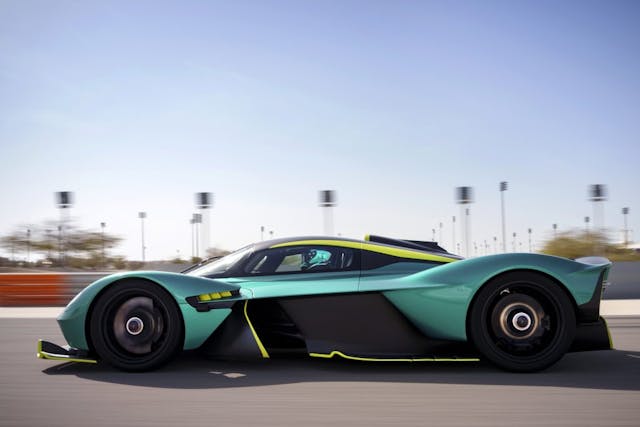
An 11,000-rpm masterpiece
At least, until you open the throttle for the first time. The anger with which the V-12 responds is utterly savage, its 575 lb-ft making the 325-section rear tires feel like skinny remolds as they light up out of Sakhir’s tight Turn 10. That rabid flare of revs is followed quickly by vicious acceleration, thrust that just… doesn’t… stop. The sound inside the car is a sort of loud, guttural growl, quite unlike the shrieking music those outside are treated to. But the sheer, all-consuming volume is so dominating at high revs—the redline sits at a lofty 11,100rpm—that you almost don’t care.
Even strapped tightly to the tub, and within the sanitized security of a relatively wide circuit like Sakhir, the Aston’s straight-line speed is never less than eye-widening. Yet once a lap, even more power is available. Press the Energy Recovery System button on the steering wheel, the car will get a palpable 138-hp kick from its electric assist motor. At Sakhir, by the time you need to brake for the first-gear right-hander that is Turn 1, that motor has helped you see the silly side of 200 mph.
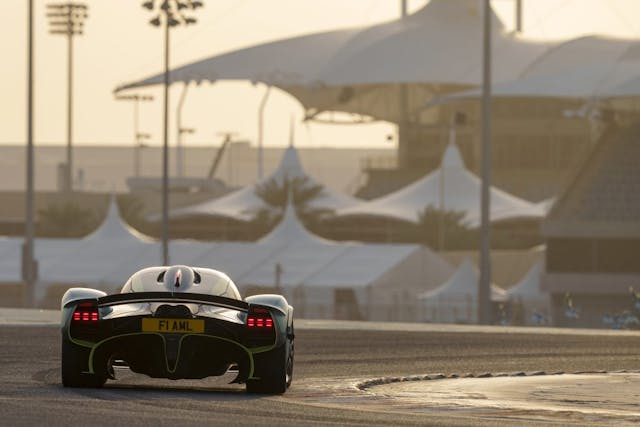
In the low-speed corners, you need to be delicate, or at least prepared to lean on the car’s driver-assist systems. But in the faster corners, where the Aston’s downforce can get to work, the tenacity is both inspiring and intimidating. You know you’re traveling quickly compared to other road cars—quickly in terms of pure mechanical grip, no aero aid—but then you tentatively try to tighten the line halfway through a corner and discover that there is still so much more in reserve. It’s quite humbling, if you’re not used to high-downforce cars.
For those who crave more downforce, and who are willing to spend additional sums on this plaything, a switch of bodywork will almost double the Valkyrie’s downforce, to 1900 kg, almost 4200 pounds. That statement sounds surreal but is more practical than you’d guess: The Aston’s optional Track Pack bodywork, though not road-legal because its use impedes regulation-mandated driver sight lines, makes the car even more ground-skimming, and will let it extract the most from its ample underbody.
But restricting this car to a track is not the point. The Valkyrie obviously needs a track to reach its full potential, but the car’s performance is made so extraordinary by its status as road-legal.
Unfortunately, Aston Martin was not willing to let us test on the road. Yet.

I’m pretty sure the experience of driving the Valkyrie in traffic would be memorable, if not something you’d want to do too often. From what I felt on the track, my guess is, the ride quality would be acceptable, but the engine’s noise and vibration would quickly prove tiring.
Does a road car not really suited to the road make sense? Arguably not. And I imagine there were plenty of times during the Valkyrie’s difficult development when none of it made much sense to Aston Martin. But sensible is overrated. After all, the sensible thing to do if you buy a Valkyrie is to tuck it away with delivery miles on. Return the car to market only when values prove too good to resist.
But that’s not the right thing to do.
***
2023 Aston Martin Valkyrie
Price: £2 million (~ $2.4 million)
Highs: A unique, violent, and utterly special experience. Will soon be certified for road use. Does much like a Formula 1 car because it thinks about air the same way and was chiefed by an F1 engineer.
Lows: Nothing like affordable. Road legality is arguably immaterial. You are not an F1 driver.
Takeaway: An apex predator in an already potent class, a hypercar among hypercars—as ferocious and high-tech as it gets.
***
Check out the Hagerty Media homepage so you don’t miss a single story, or better yet, bookmark it. To get our best stories delivered right to your inbox, subscribe to our newsletters.

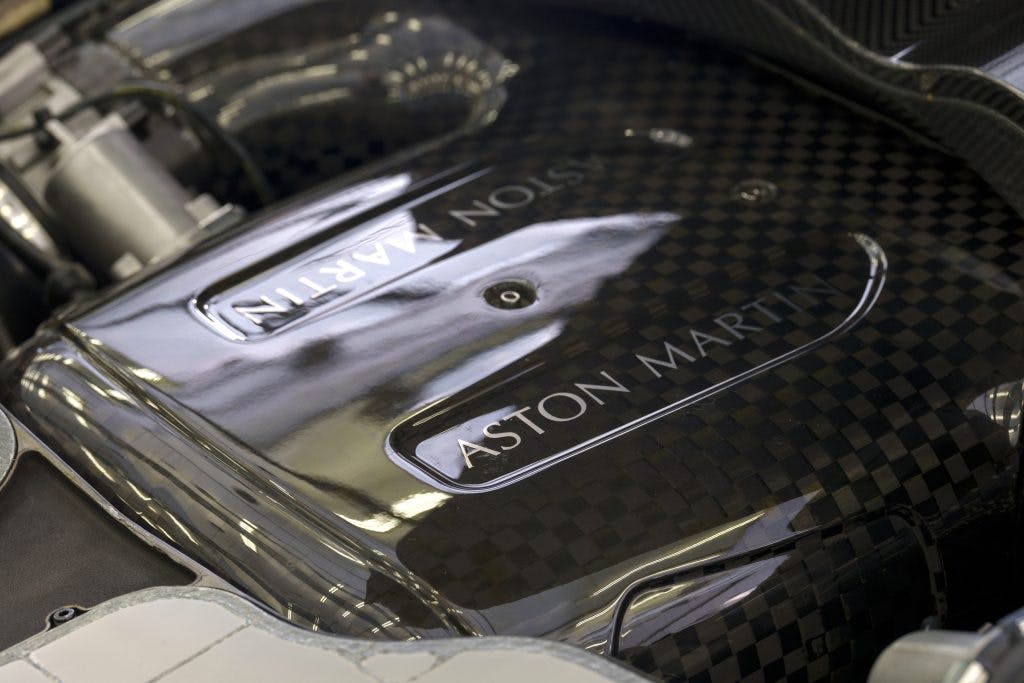
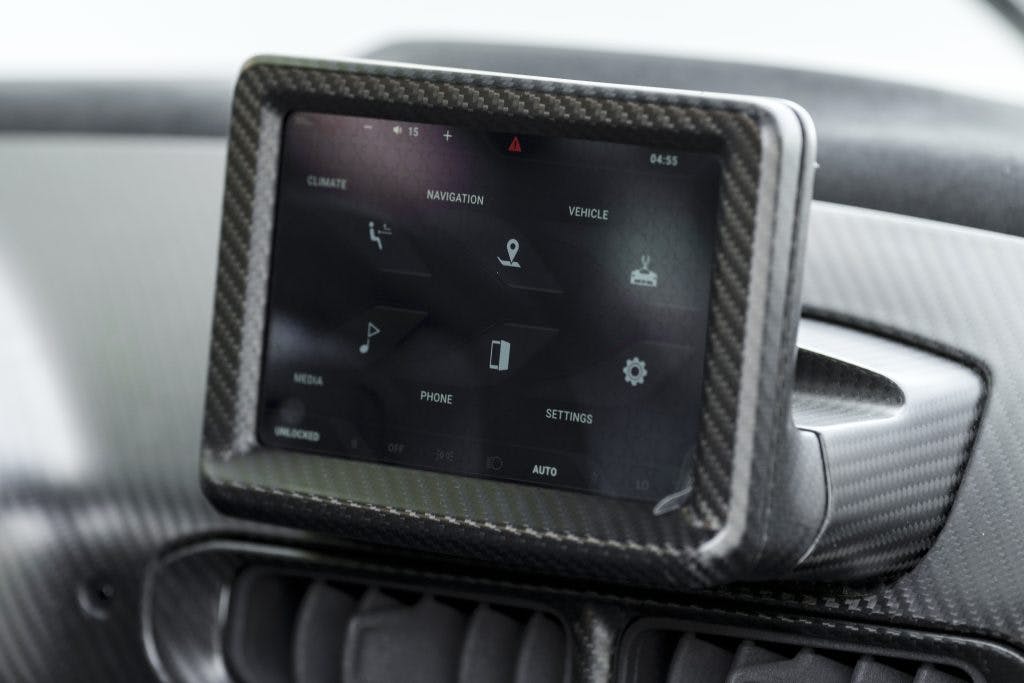
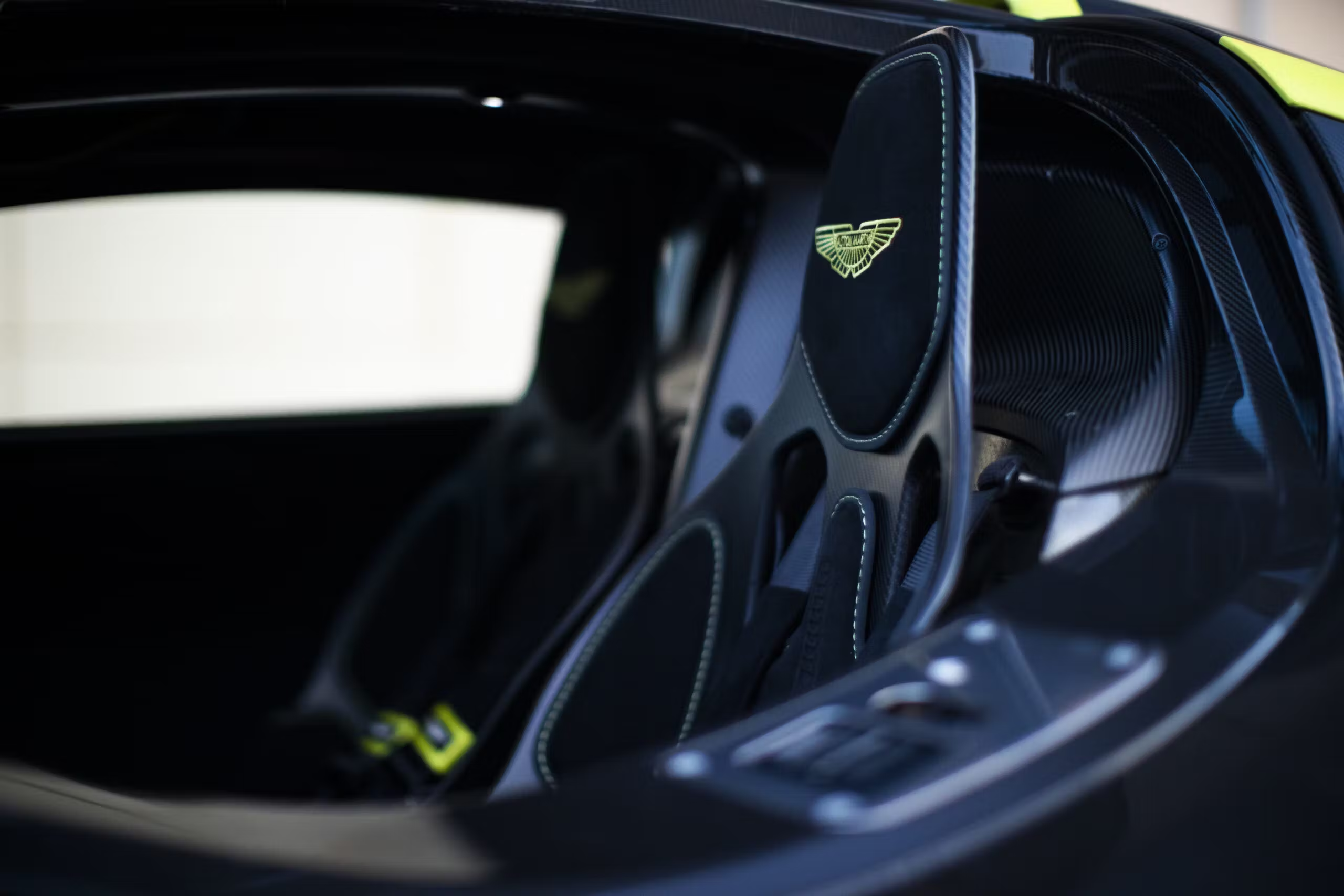

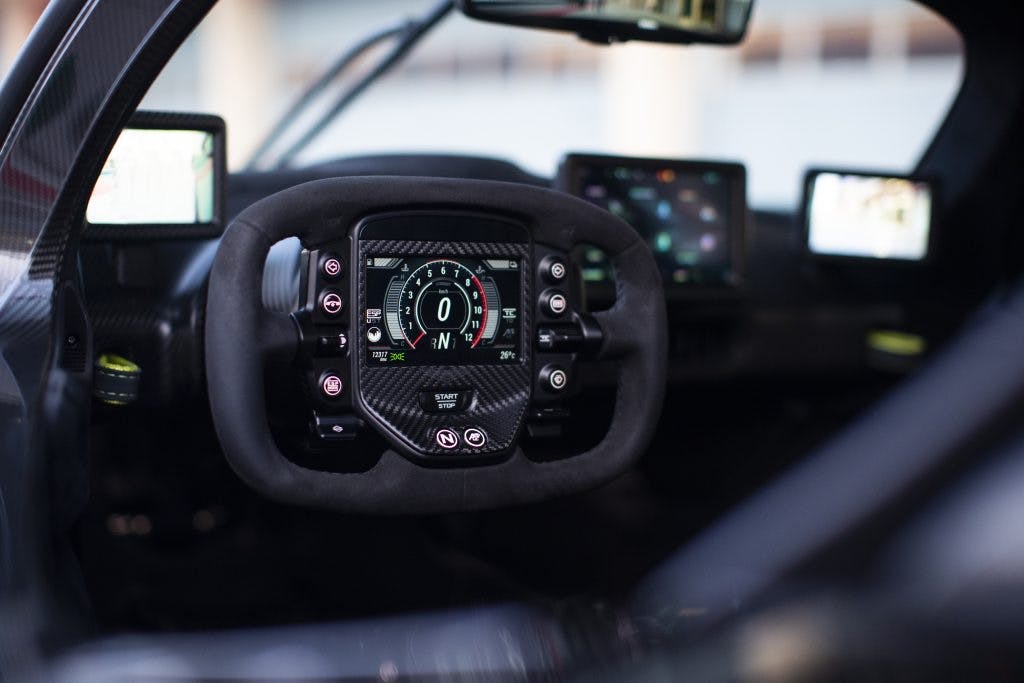
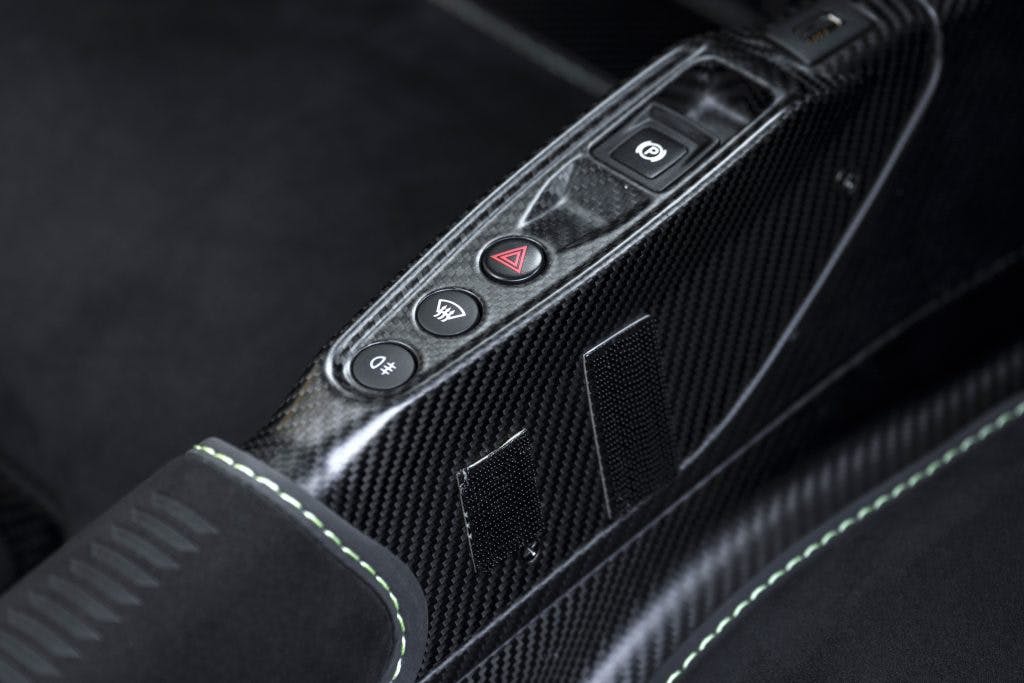
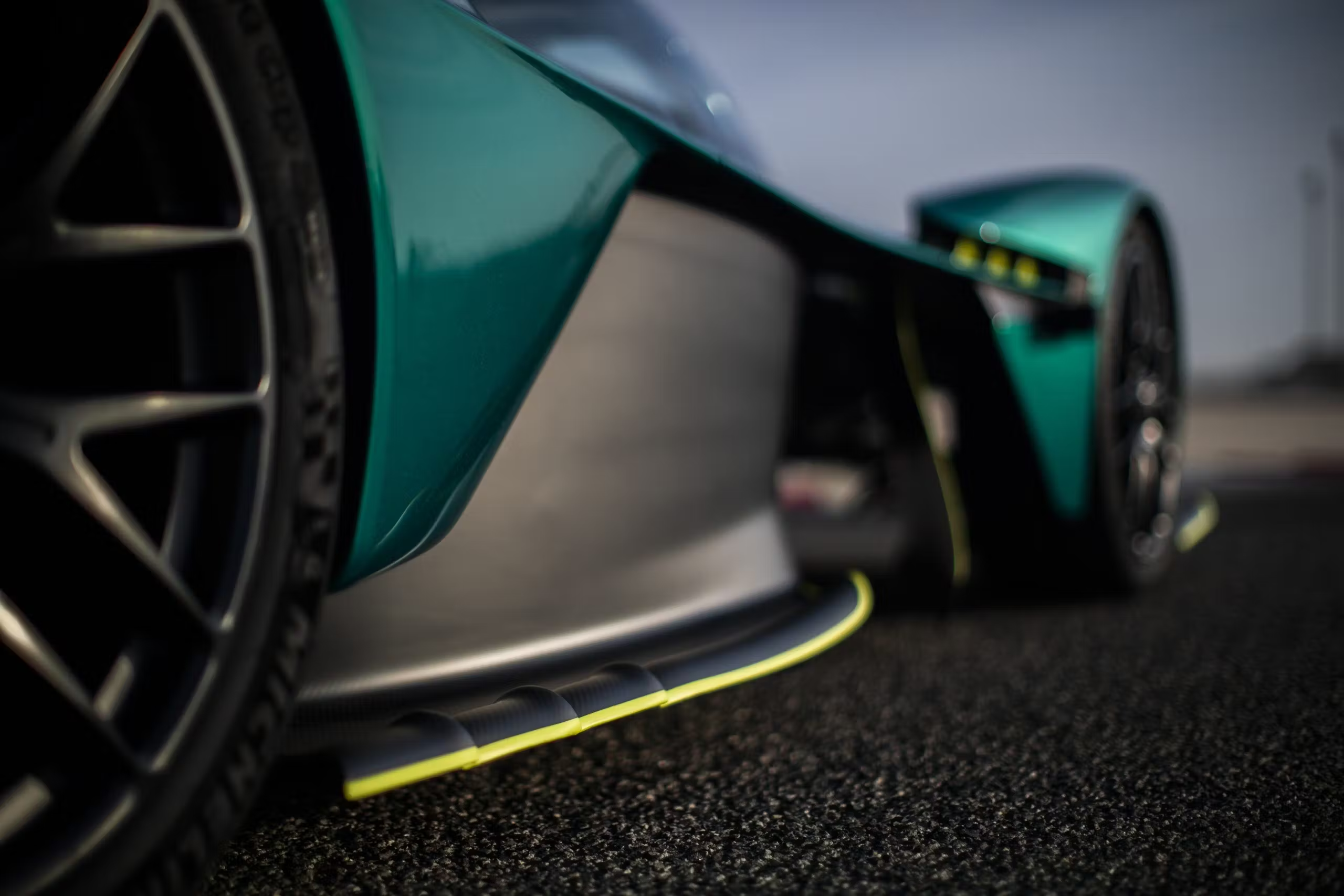
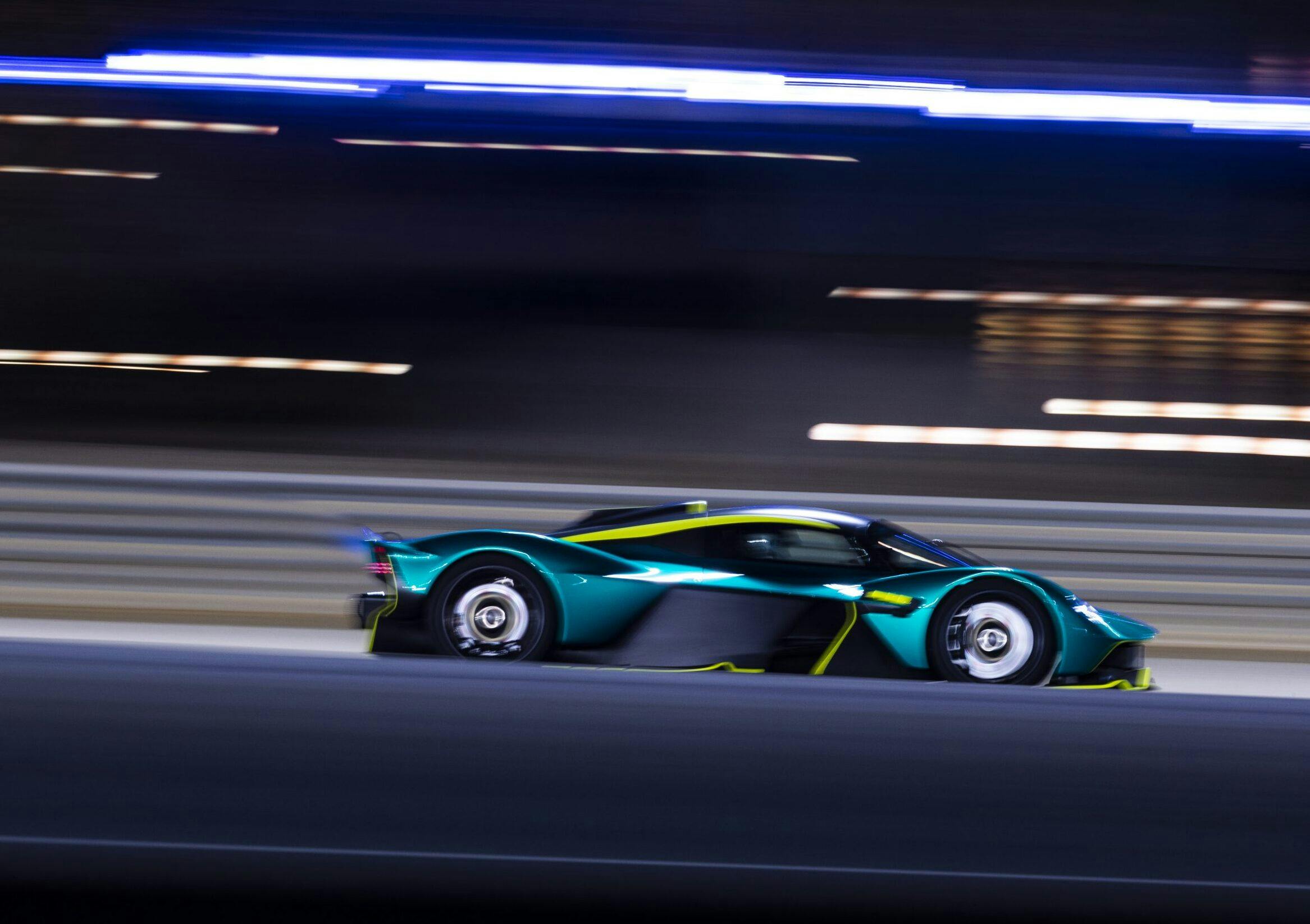


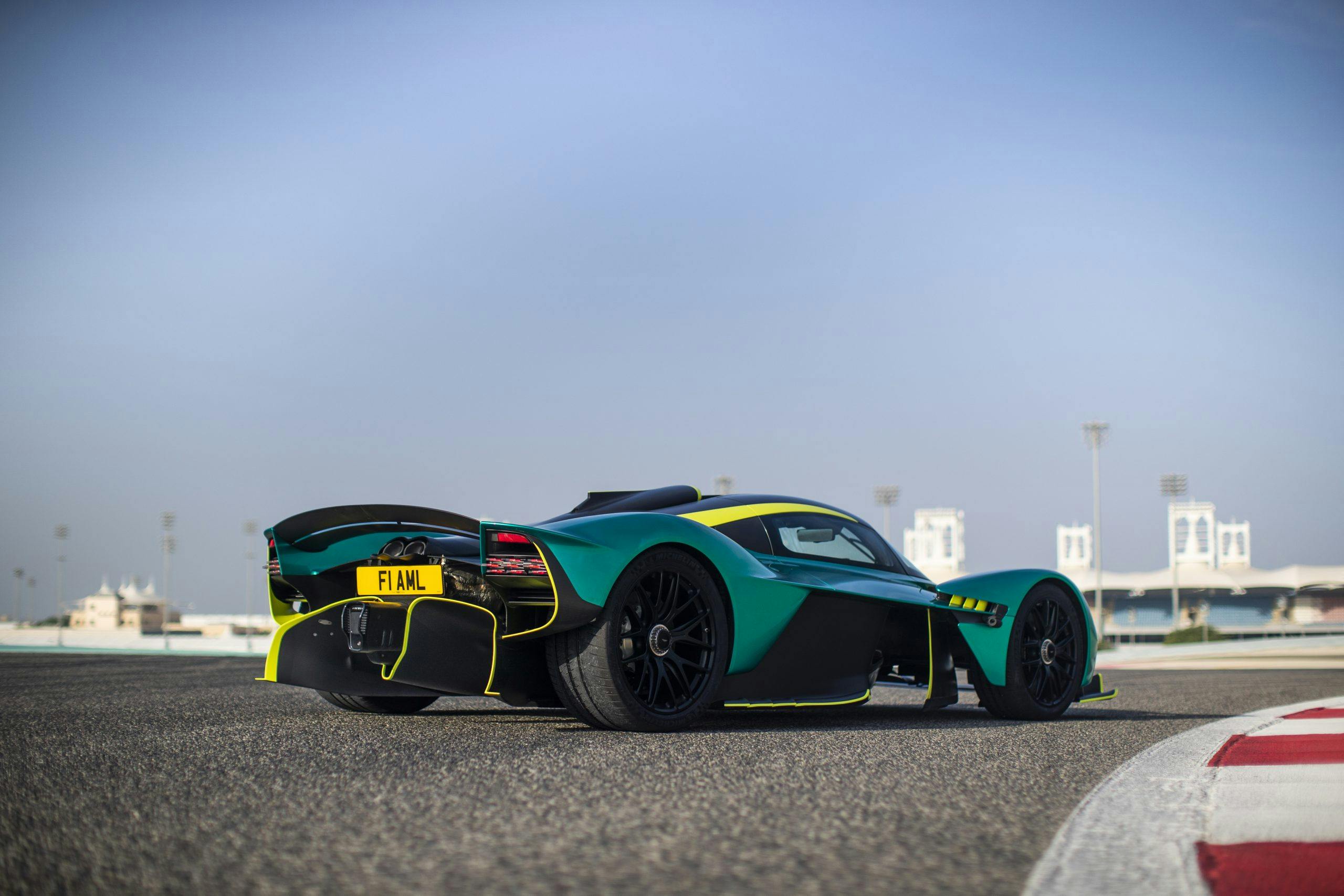


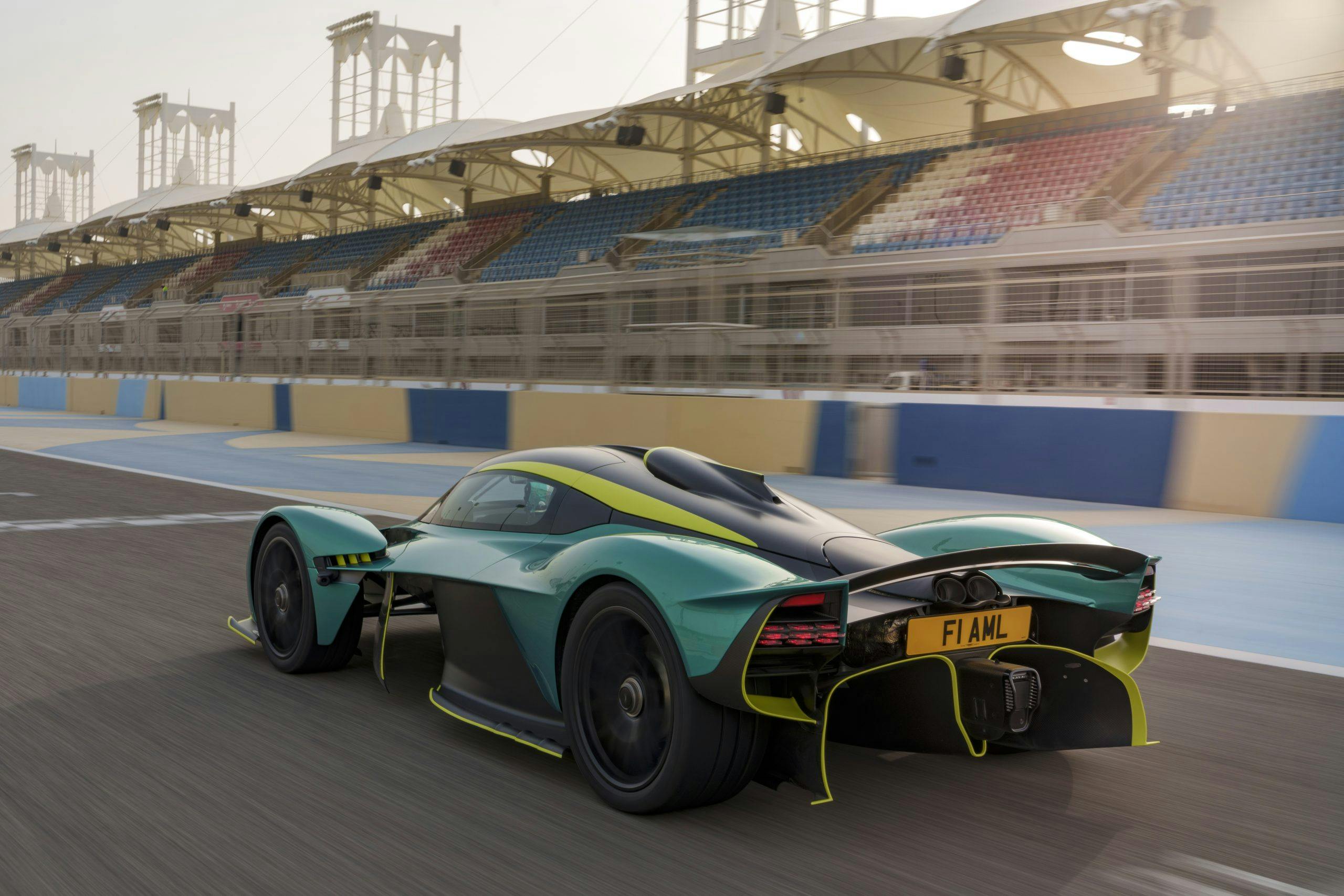

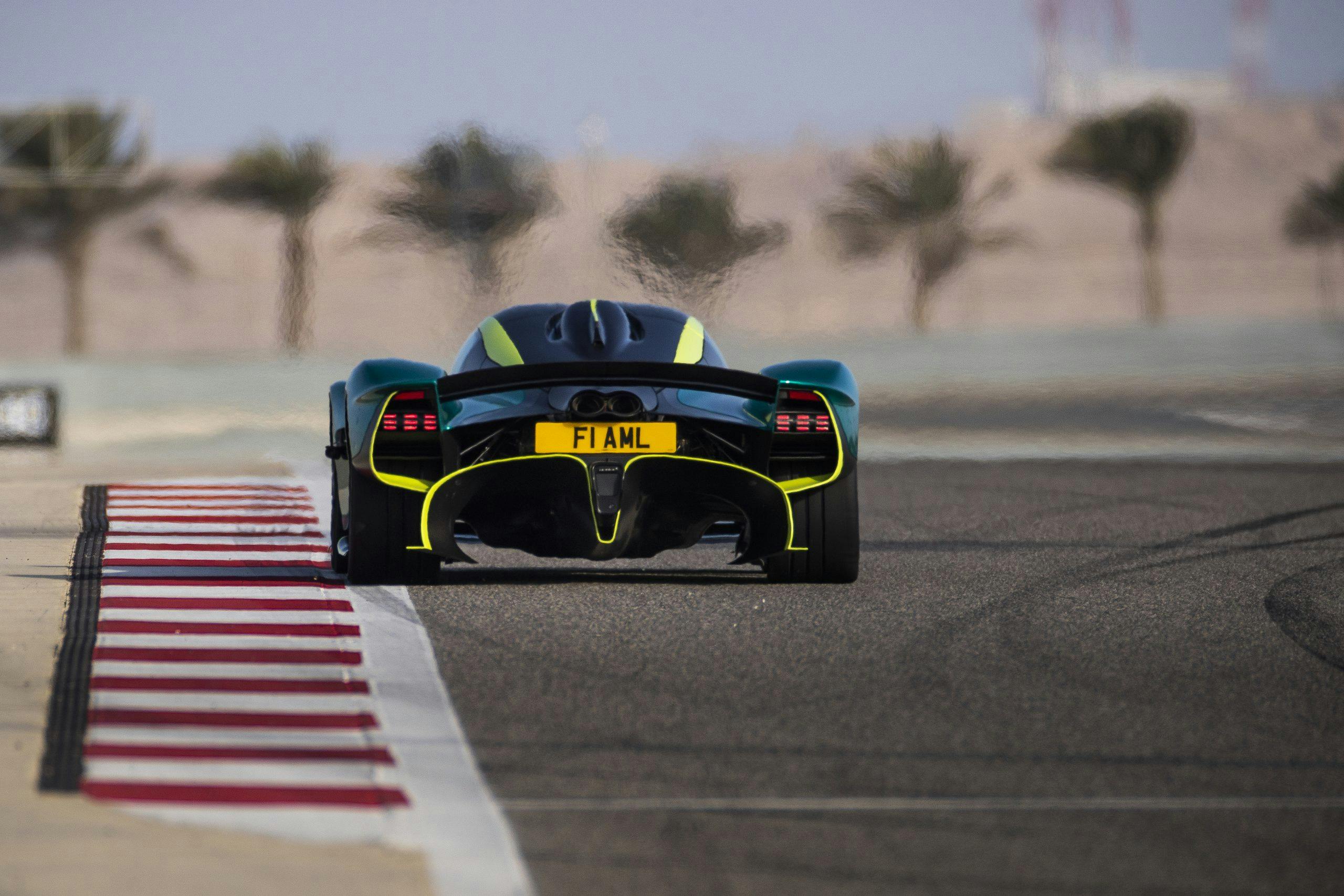

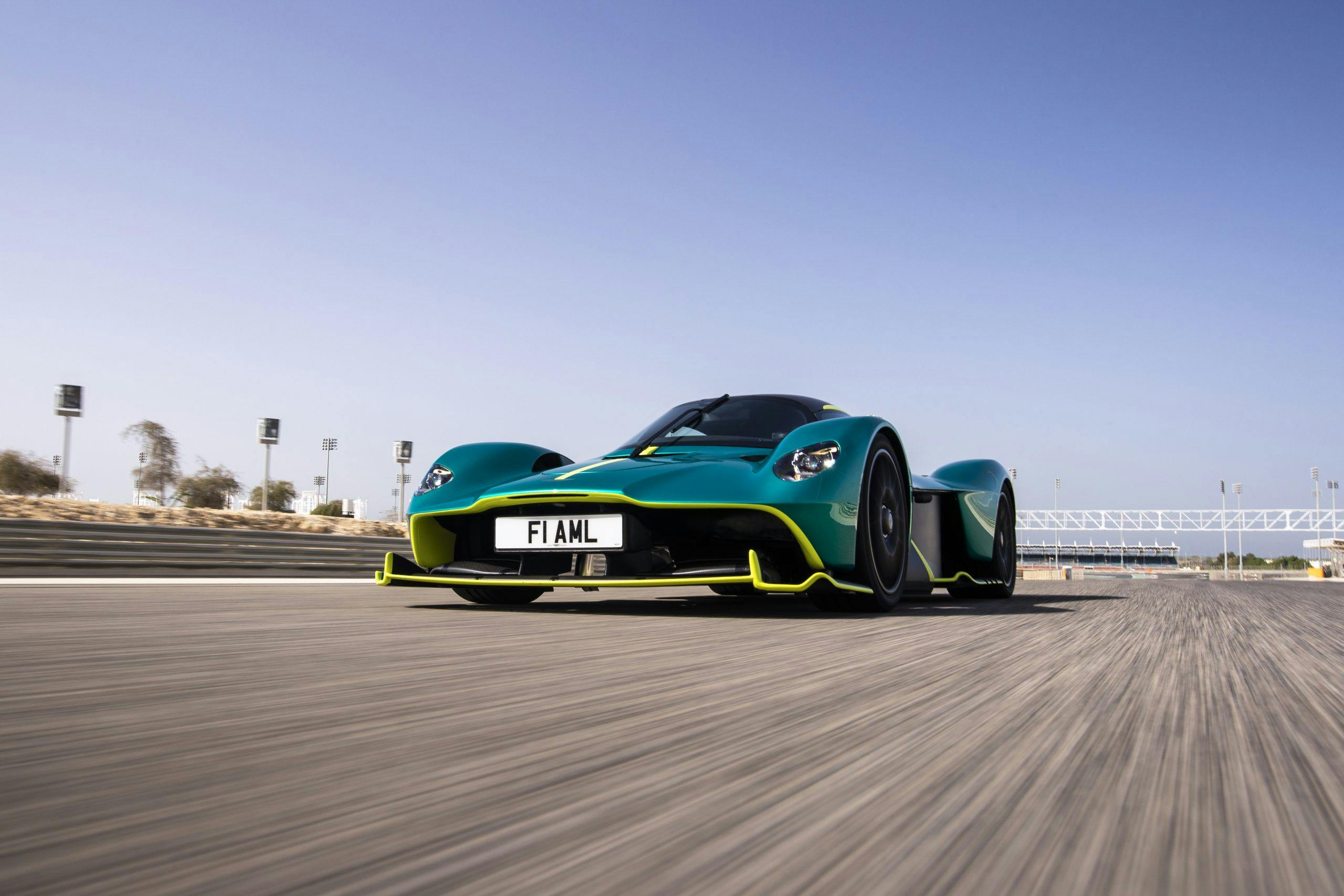
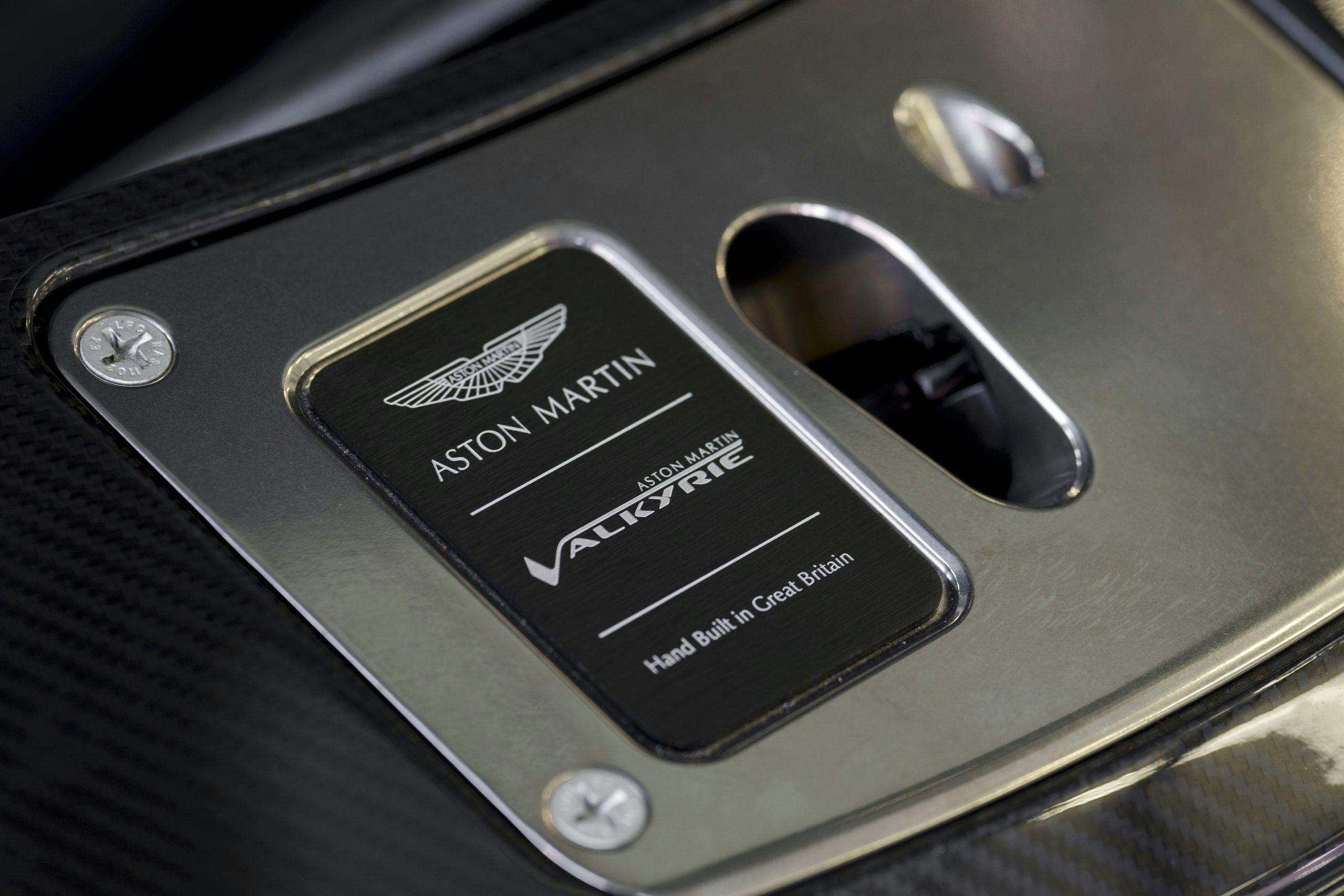
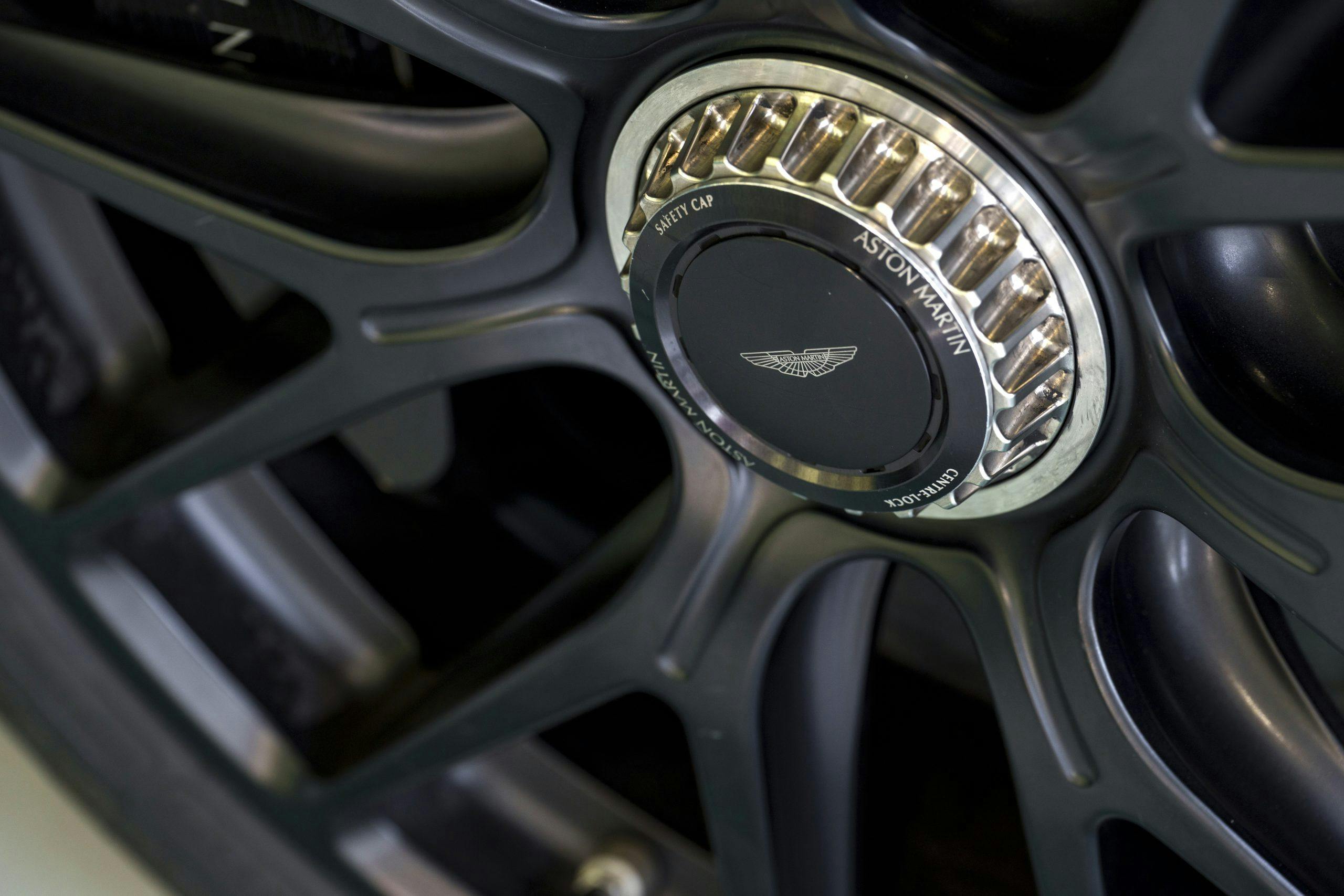
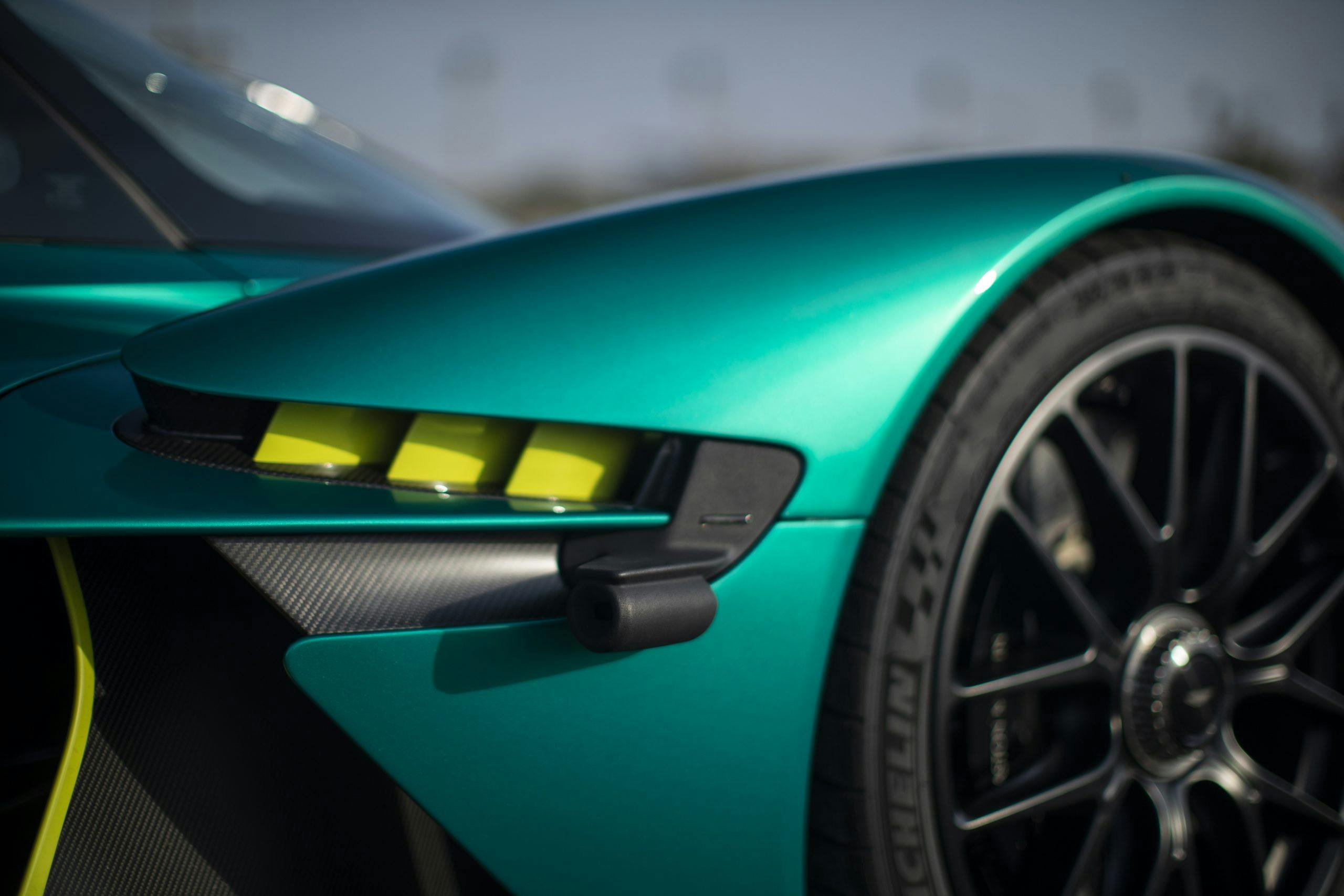





























One question I have as an American, would the track pack still be legal under the American show and display regulations like the regular Valkyrie. I am not talking about the AMR Pro because that is pretty much it’s own car just the Track pack on an otherwise road legal Valkyrie. Because if it is I would see no reason to get a non-track pack Valkyrie. Also, why are there “bleed offs” for the aero past 135mph. Lastly one thing that has puzzled me is the lack of a rear wing; for a car that is all about generating downforce, why neglect one of the most important tools in making downforce?
I think the multiple time F1 awarded designer who designed this thing has thought of it. It uses ground effects to a much larger effect in generating downforcre than the wing because a wing has drag associated with its downforcre and ground effects, for the most part, don’t.
But the top speed is already limited electronically, so more aero could just reduce the top speed. My theory is that the off the shelf cup 2r’s just couldn’t take the downforce without crazy tire wear. I wish they had developed with michilen a new tire that could handle the higher downforce so they don’t have to have a bleed off and have a bigger wing. Also do you know if the “track pack” valkyrie is road legal under the show and display law.
The noise it made in the video was intense. I imagine earplugs should be standard for anyone not wanting to go deaf. It sounds amazing.
Honestly believe it is the best road car engine ever
yes i remember my db2 of 1950 it was also a star of te road
Hope this ‘car’ helps get AML profitable.